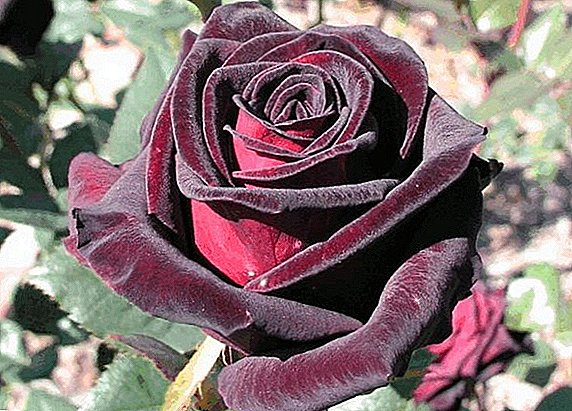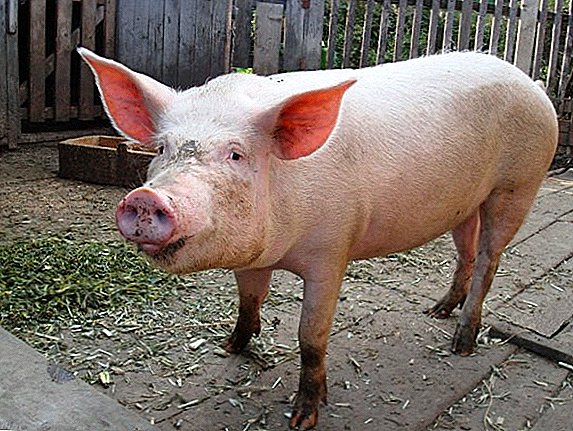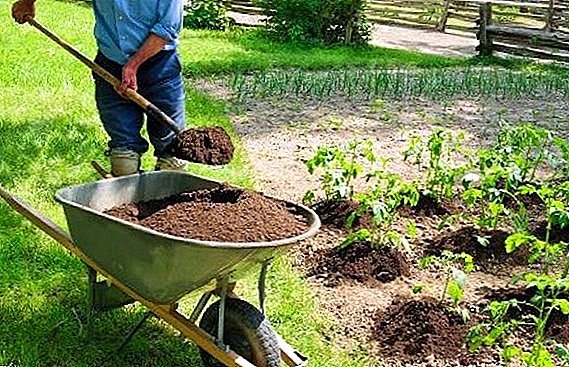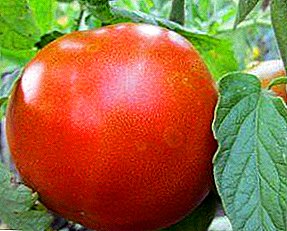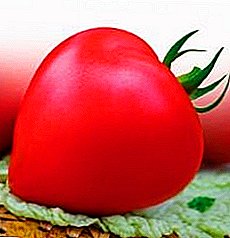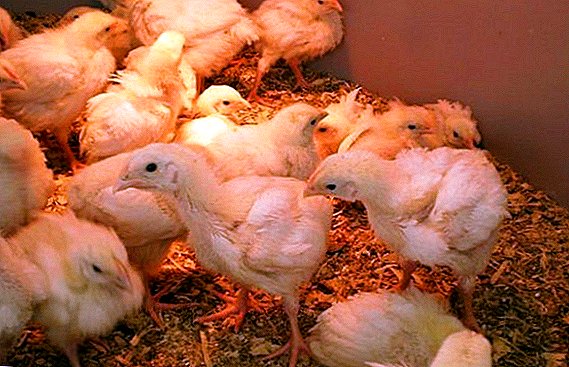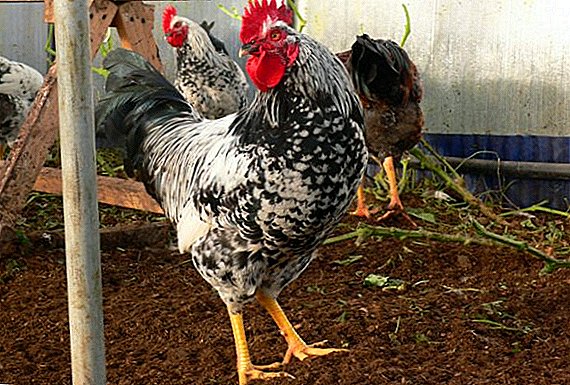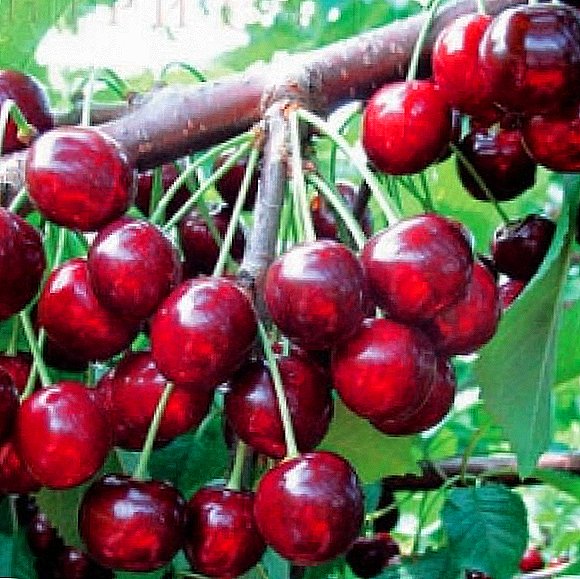
This variety of sweet cherries is very similar to its parent - sweet cherry "Pink Bryansk", but there are still a lot of differences.
And if you decide to plant a sweet cherry on your plot, it is very important to know all the details about the fruits, the tree, the shoots, the pros and the disadvantages of the variety.
Therefore, consider in detail the variety "Revna" and learn about the features of planting its seedlings and tree care.
"Revna". Secrets of love gardeners to this variety
As already mentioned above, the Revna cherry cherry is a direct relative of a variety such as Bryansk Pink. It was from her seedlings that the wonderful “Revna” variety was obtained, which was so beloved by many today. As far back as 1994, it was entered in the register of varieties of fruit trees in Russia, according to which zoning of a variety extends to the entire Central region of the country. However, in fact, the scale of growth of varieties is much voluminous. In order tell you why.
Description of the features of the cherry berries "Revna"
Fruits of the variety characterized by medium size. Their average weight is about 4.7 grams, and its maximum value is 7.7. The shape of the berries is wide-round, its height is 19 millimeters, its width is about 20, and its thickness is 19. They have a wide funnel and a rounded top, which has a white dot at its base.

The skin is very dense. The color of the cherries is dark red, which makes them almost black during the period of removable and consumer maturity. Thus, the fruits have a very beautiful appearance.
Pulp also has a dark red color, the structure is quite dense and juicy. Juice is dark red, saturated. The taste is uniquely sweet, in the opinion of tasters, they received almost the highest score - 4.9 out of 5. For 12.6% of sugars, which are contained in 100 grams of berries, only 0.3% of acids fall. The content of vitamin C in the same amount of berries is 13.3 mg.
The stone has a medium-sized sweet cherry, about 5.2% of the total weight of the berry. Bone mass in the average is 0.29 grams. It is light brown in color and oval in shape with a rounded top and a wide round base. Positive quality is that the bone is perfectly separated from the pulp.
Sweet cherry stem has an average length and thickness. It comes off the fruit very easily, without tearing out the pulp.
The use of fruits can be universal. Very good for use in raw fresh form, because in this form they have the most intense taste and the content of useful substances. However, jams and preserves are also excellent, they do not require the addition of large amounts of sugar.
The distinctive characteristics of the tree
Tree, as well as that of the cherries of the Bryansk Pink, is of medium size. It grows very quickly. The shape of the crown of the tree is pyramidal with a characteristic arrangement of branches in relation to the trunk: they form a large angle. Crown thickening is average. Almost all the fruits are formed on the bouquet branches of a tree, and only 20% on the grounds of one-year shoots.
The tree begins to bear fruit at the age of 5 years (that is, after 5 years from the moment of planting the seedling at a permanent place of growth). In the period of flowering the tree enters in the middle of May, the fruits begin to ripen late, in late June, early July. Harvestswhich on average are collected from one hectare of the Cherry Orchard "Revny", equal to 73 centners. The maximum yield is 112 centners per hectare.

Cherries "Revna"
Shoots mostly straight, medium thickness. Their color is light brown. Large shoots are formed on the shoots. In the vegetative period, the buds are ovoid, and in the generative, ovoid. The leaves are formed very large and wide. Leaf shape - ovoid, painted in dark green light. Inflorescences contain 4 flowers, and not three, as is the case with most cherry trees.
The flowers are medium in size, saucer-shaped. Petals of flowers are placed separately from each other, without touching. The color of the petals is white. The cup has a glass shape without serration. The stamens and pistils of flowers are very long.
Positive qualities of the Revna sweet cherry variety
Fruits of a grade have very high qualities both in a form and appearance, and in flavoring qualities. Thanks to the thick peel of sweet cherries, they are suitable for transportation over long distances. The tree is highly resistant to low temperatures. At the same time, frost is not terrible as a tree, and flower buds during periods of spring frosts.
In fact, the stem and the base of the branches are not affected by sunburn. Also, high frost resistance is noted. Even after the tree experienced very severe frosty winters, the tree was amazed only by 0.4 points. Kidneys severe frosts can be as affected as possible by 17%. Fungal diseases are not marked on this variety of sweet cherries.
The disadvantages of cherry varieties
However, the cultivar is almost self-infertile. With self-pollination, the yield is only 5%. In order to still pollinate the tree, it is recommended to plant other varieties along with the Revna cherries. Well, this variety is pollinated from "Ovstuzhenka", "Raditsy", "Venyaminova", "Tyutchevka", "Compact", as well as the Iput cherries.
Planting cherries in your plot - the basic rules
Choosing the time of year for planting seedlings
In order for the sweet cherry to take root, it should be planted in spring. After all, even an annual cherry tree boasts very long shoots. However, these shoots are very susceptible to low temperatures and there is a high probability that they will not be able to survive the winter. It is important to know that in winter all the water from thin branches is frozen out, and the root system, which has not yet taken root after the autumn planting, is simply not capable of supplying it to the branches.
Spring planting of cherries is carried out several days after the soil has thawed. In addition, do not tighten with the landing - if the sapling had managed to bloom at the previous growth site, it will not always be able to take root on the new one.

Which place is better to choose for sweet cherry?
Choosing a place is one of the most important tasks before planting cherries. After all, this tree is very demanding on the flow of air and light. Sweet cherry does not tolerate cold northern air currents. Therefore, pick up the southern slopes, where the cold air has no opportunity to stagnate. Also, for good growth and development of sweet cherry fruits, it is important that the tree receives as much light as possible. Therefore, for planting is best suited to the southern side of the site, not shaded buildings and other trees.
We select the suitable soil for planting
Best of all, sweet cherry grows and bears fruit on fertile loams and sandy loam soils. If you manage to pick up exactly this kind of soil - you can not worry about feeding cherries during the first 3 years after planting.
The same soil as clay, sand and marshy are not recommended for planting cherries. Indeed, despite the fact that this tree loves moisture, long periods of stagnation and lack of air will simply destroy the seedling. In the case of sandy soils, even very frequent watering will not help the tree.
If the soil on your site is just not appropriate, the situation can be corrected by mixing them with each other. Clay is added to sandy soils, and sand - to clay. Well, do not forget about very careful fertilizer.
What is the best seedling
Among the young seedlings of “Revna” sweet cherry, both one-year and two-year-olds are well suited. However, the following two points should be considered:
- The presence of a place of vaccination varietal scion, which will ensure the development of exactly the sweet cherry that you want to grow. A sapling without a vaccination site will be grown from a stone and most likely will grow as a wilderness, and not a varietal tree.
- Well developed root system. The roots must be alive and not dried, otherwise the sapling just will not take root. If you still notice dried roots on a seedling, simply place it for 6-10 hours in water before planting it directly.
It is also interesting to read about the varieties of late-ripening cherries.
The main stages of planting cherry
In order not to forget about anything important when planting cherries on your site, we recommend that you follow the following guidelines:
- We dig a hole prematurely. Its depth should be 60 centimeters, width - 70. We dig a stake in the bottom of the pit, to which we will tie our seedling after planting (it should be located on the north side of the tree and at a distance of 10 centimeters from it).
- At the bottom of the pit we fall asleep the top of the soil, mixed with 3 compost buckets. We pour it out making a mound, compact it and pour another not very thick layer of non-fertilized soil.
- We plant a tree, straightening its roots above the mound. Ensure that the root collar protrudes above the surface 5–7 centimeters.
- Gradually fall asleep pit to half. We condense the soil and pour out 1 bucket of water.
- Absolutely fill the entire pit, once again carefully and gently compact the soil. We make a hillock from the rest of the earth around the seedling's trunk - it will keep the spreading moisture.
- Liberally water the seedling, using 1-2 more buckets of water (depending on soil moisture). The soil around the trunk should be mulched humus or peat.
- We tie up the seedling to the stake, which we drove into the pit even when it was being dug.
- Then regularly monitor the condition of the seedling and, if necessary, repeat the watering. Feed the sweet cherry except for compost, which is brought to the bottom of the pit, is actually not necessary. If the soil is not very fertile, you can also make fertilizers such as superphosphate and nitrate. In no case at direct landing do not make urea (nitrogen), it can only harm the sweet cherry. Fertilize them only in the second year after planting.

Properly care for sweet cherry "Revna"
Regular and good care for cherries is the basis of a bountiful harvest. Therefore, you need to be very attentive to the tree, regularly feed it and protect it from various diseases and adverse weather conditions. But regardless of any circumstances and peculiarities of the variety, it is very important to regularly dig up the soil around the stem of the cherry tree so that enough air reaches the roots.
Sweet cherry - how often should I water a tree?
Watering the cherry loves and its harvest will depend on them. Therefore, regular regular watering should be carried out no more than 1 time per month. Naturally, it will be more governed by the weather and soil moisture. When heavy rains sometimes even have to dig additional drainage pits, which will accumulate in themselves excess water. However, during droughts, watering is sometimes increased up to 4 times a month.

Feeding cherry
Feed for sweet cherries, as well as any other stone tree, is carried out using urea, phosphorus and superphosphatesas well as lime (calcium) and potassium. But the best dressing for this tree is undoubtedly rotted manure. But you shouldn't overdo it with fertilizers - regular feeding with humus should occur no more than once every 2-3 years. It is possible to carry out top dressing both in the spring, and in the fall, bringing fertilizer under digging.
Very good supplement feeding organic fertilizers also mineralbecause they are also needed by the tree and are absorbed much faster. In particular, already in the second year after planting, the sweet cherry is fertilized in villages
itroy and ammonium sulphate. Per 1 m2 is used no more than 25 grams of these fertilizers.
It is better to pour the soil with nitrate in several stages - before flowering when digging the soil, after flowering and after another two weeks. At the same time, the required amount of fertilizer mentioned above is divided into three parts.
In the fall, superphosphates and potassium-containing fertilizers are introduced into the soil. It is in autumn that they are introduced because their solubility is a long process, and thus it will begin to feed the roots during the period of autumn growth. At 1m2, no more than 80 grams of superphosphate should be used, about 40 grams of 40% potassium salt. Ash tree grows very well on the growth of the tree, which is applied to the soil in an amount of not more than 300 grams per 1m2.
How to help cherries survive the winter frosts?
Preparing a tree for winter is very important to carefully dig up the soil and water it. Thus, the roots not only throughout the winter will have enough air, but also the necessary amount of water to feed the frost-affected branches.
Trunk it is important to envelop with snow and tying
Spruce branches to protect the sweet cherry from rodents. If you carried out the autumn pruning of the branches - be sure to treat all the cutting sites with copper sulphate. Also, the young tree should be very well tied to the stake so that it does not bend from the winds and under the weight of snow.
Cherry tree diseases and pests - how to fight?
Issues of protection against fungal diseases of sweet cherry "Revna" is not urgent. After all, the tree is not exposed to such diseases. But still, if there are many other trees in the garden and the year was not particularly favorable for gardening, any tree can suffer from diseases. In this case, even for no reason, it is worth treat cherries with generic preparations for stone trees. Spraying should be done before flowering, and if necessary, after the cherry blossoms.
If you notice any pests on a tree, leaves or fruits (cherry flies are most often found on cherries), then the best way to control them is to choose an individual so as not to water the tree with universal toxic preparations.
Sweet cherry pruning
First trim are already held on the one-year cherry tree and depend on the types of branches and the goal pursued by the gardener. If you want to get a strong growth of shoots at an acute angle - side branches should be shortened only by ¼. If you want to get the angle of escape shoots in the range of 50-60 º - you need to cut off half of the shoot.
At the same time, in spite of the average strength of the growth of shoots, they will be able to begin to bear fruit very quickly. Most of the shoot is shortened if they want to achieve escape from a right angle and give them strong growth.
In the future, you need to monitor the uniform growth of branches and the direction of their growth. If some branches or branches overtake others in growth, then it should be shortened much more regularly and more intensively (but not completely cut). We apply the same to the branches and shoots, which direct their growth in the middle of the crown of the cherry.
All weak and damaged branches also need to be removed, since they still do not benefit either you or the tree. After pruning, they are burned along with fallen leaves.


